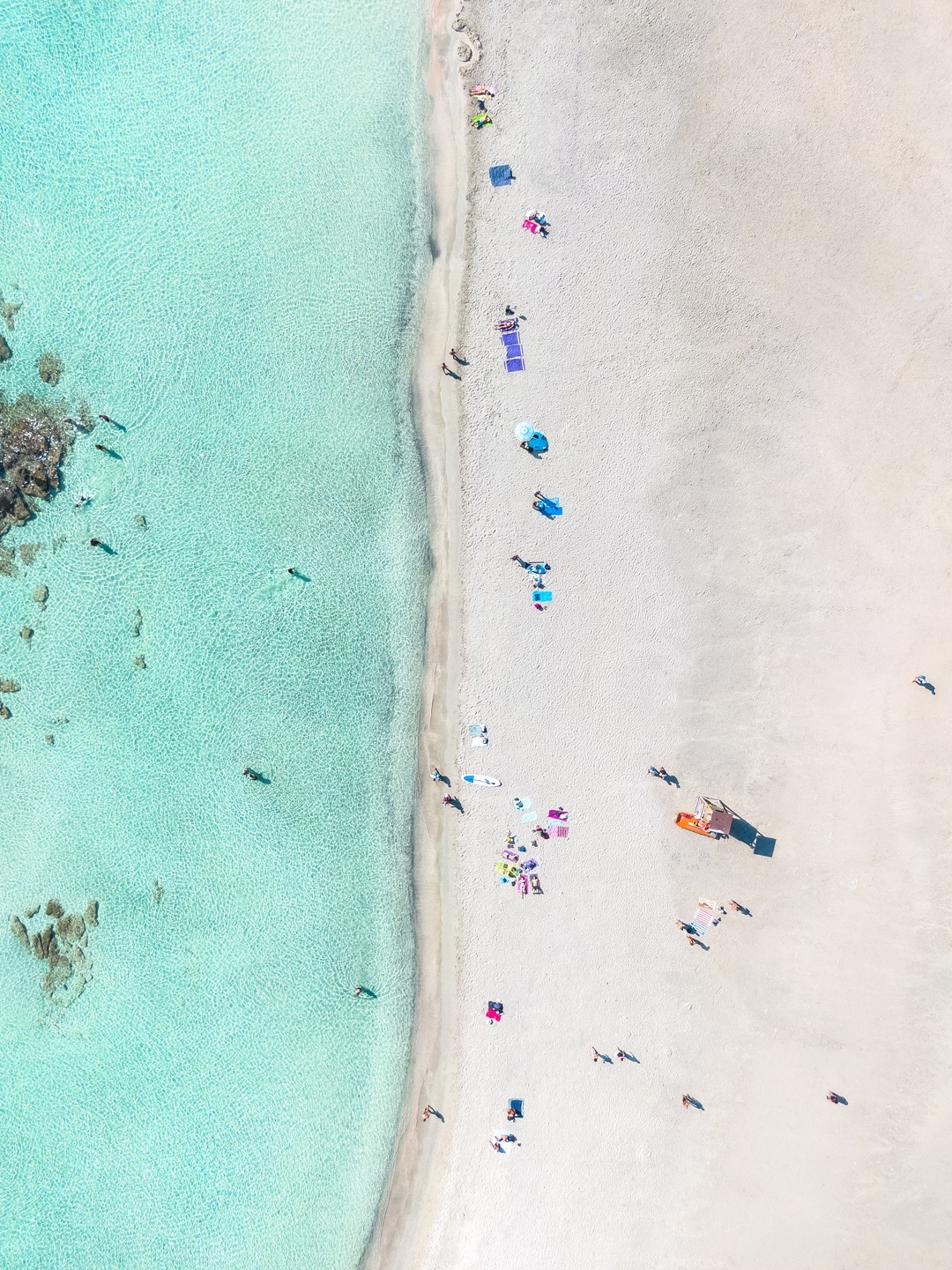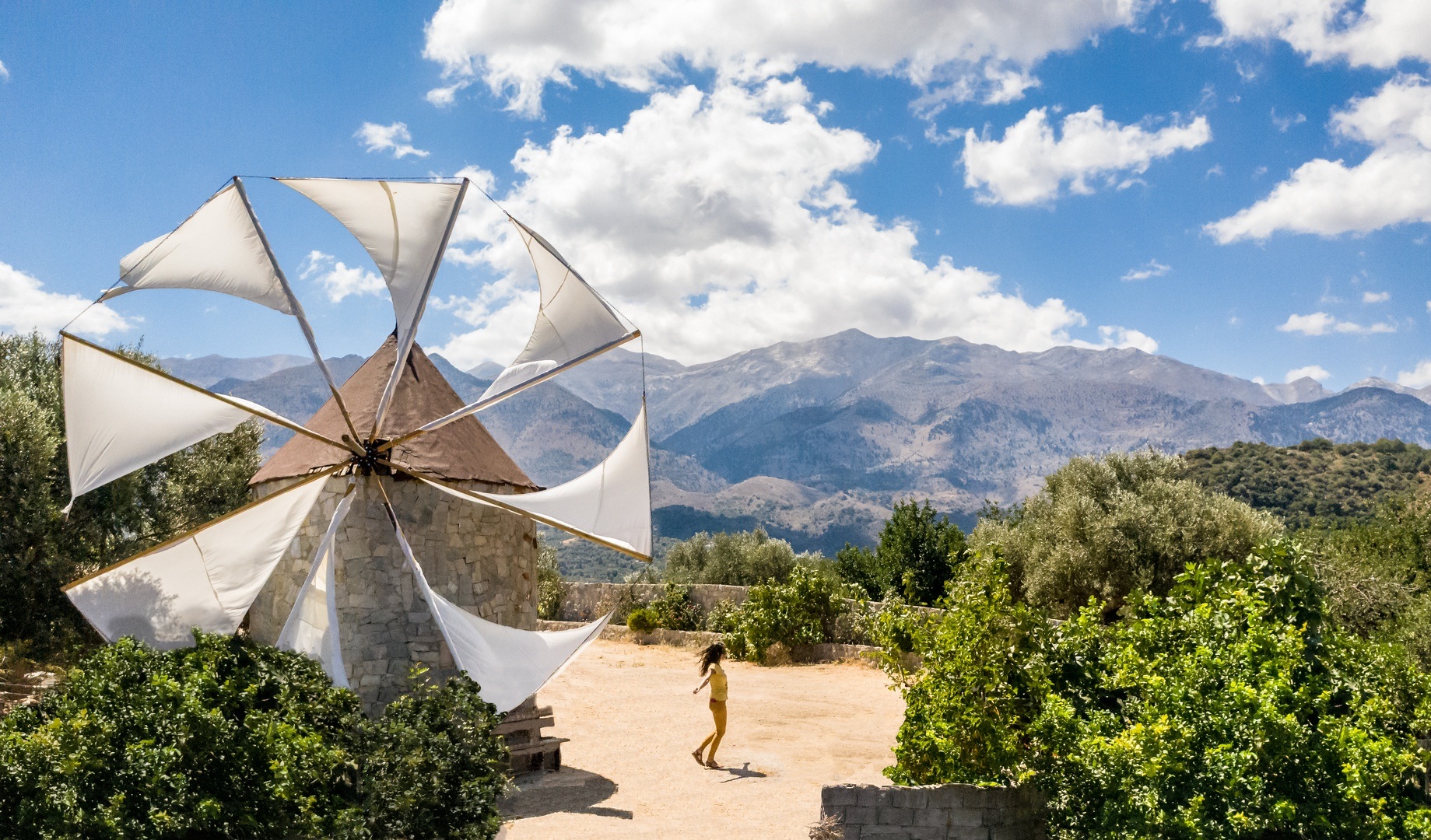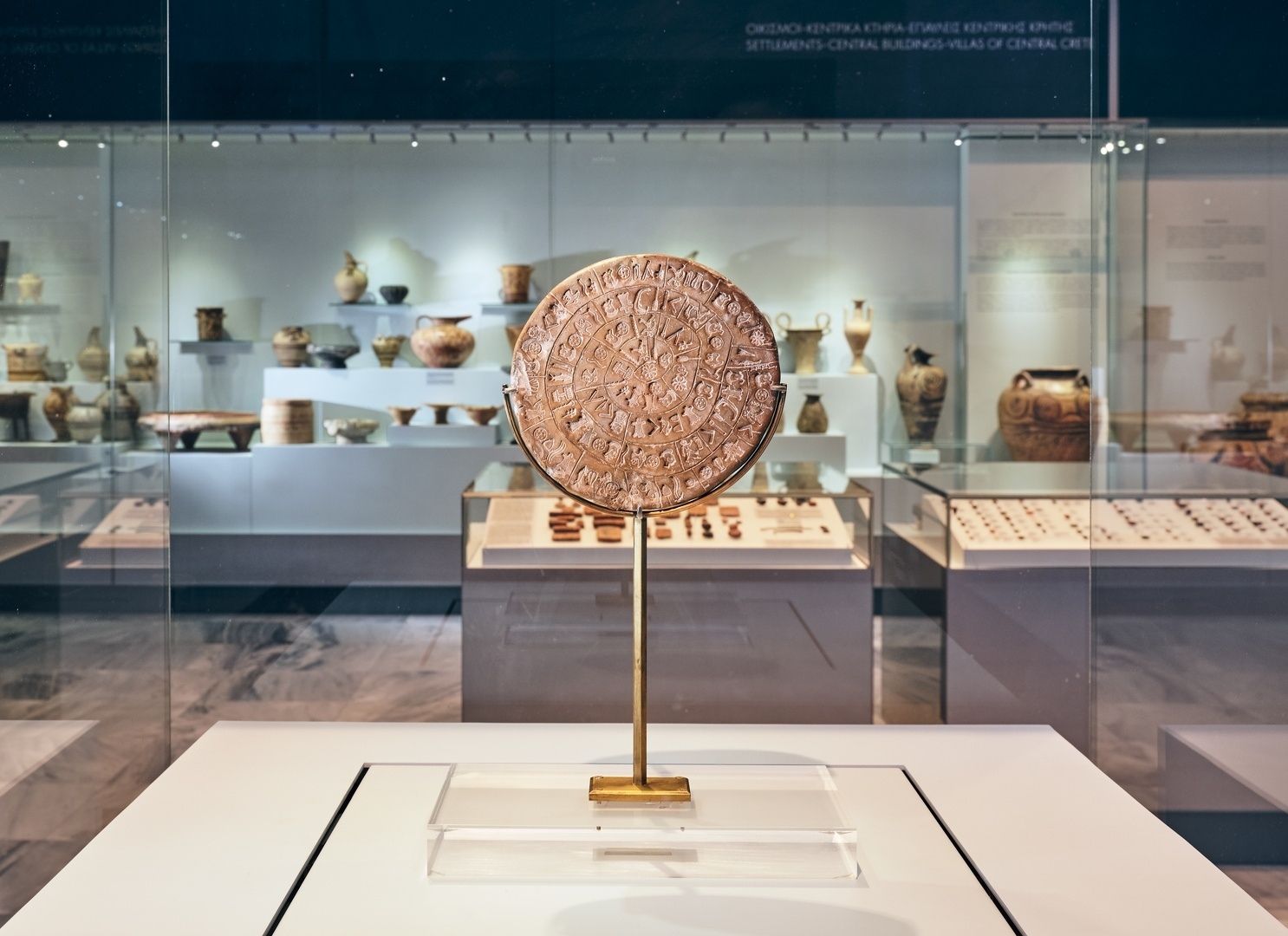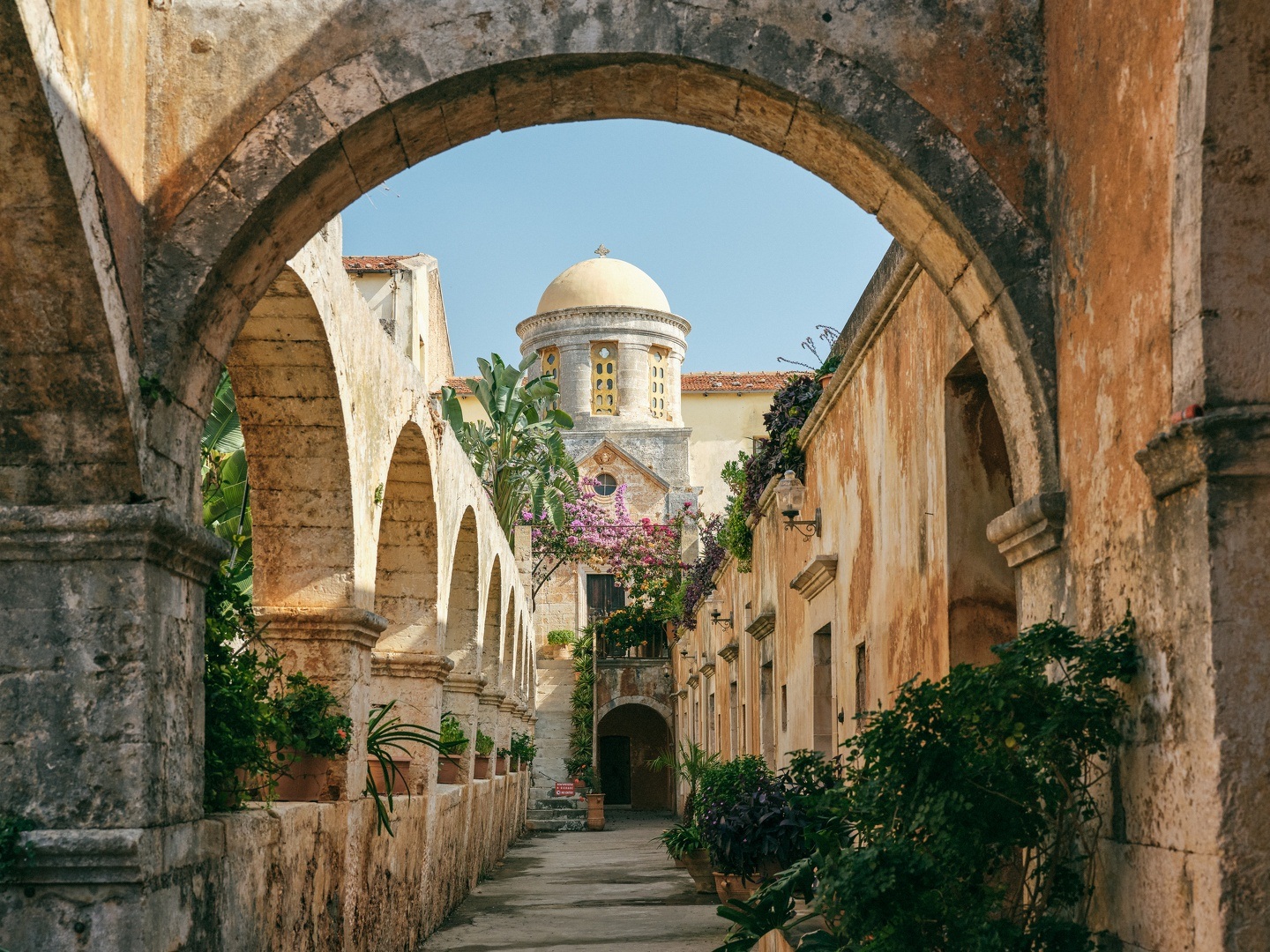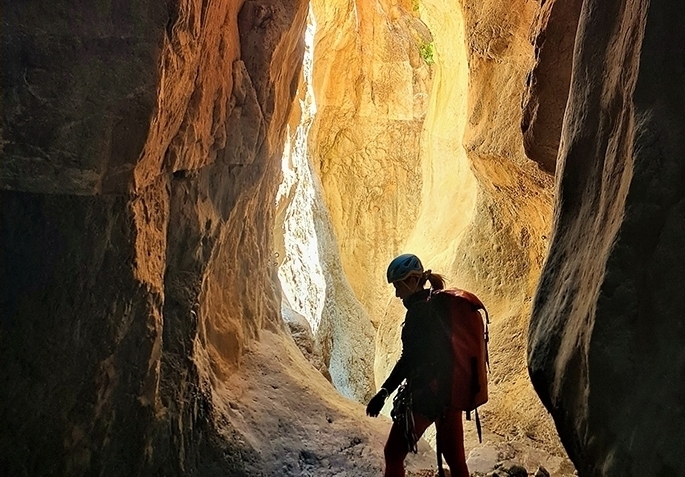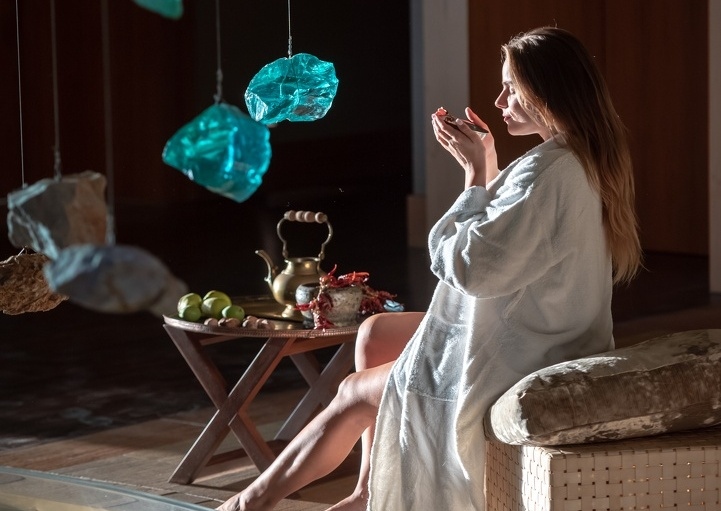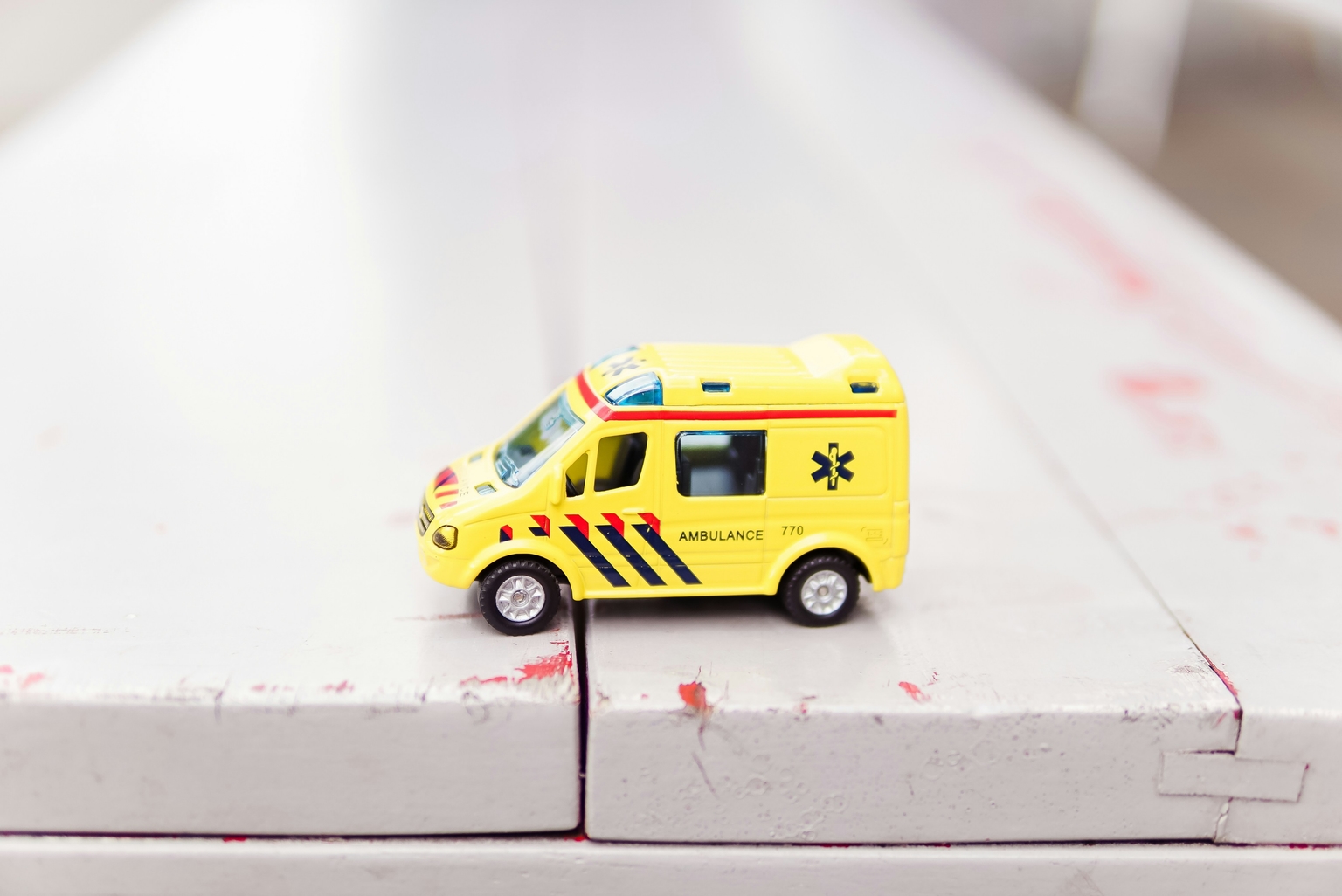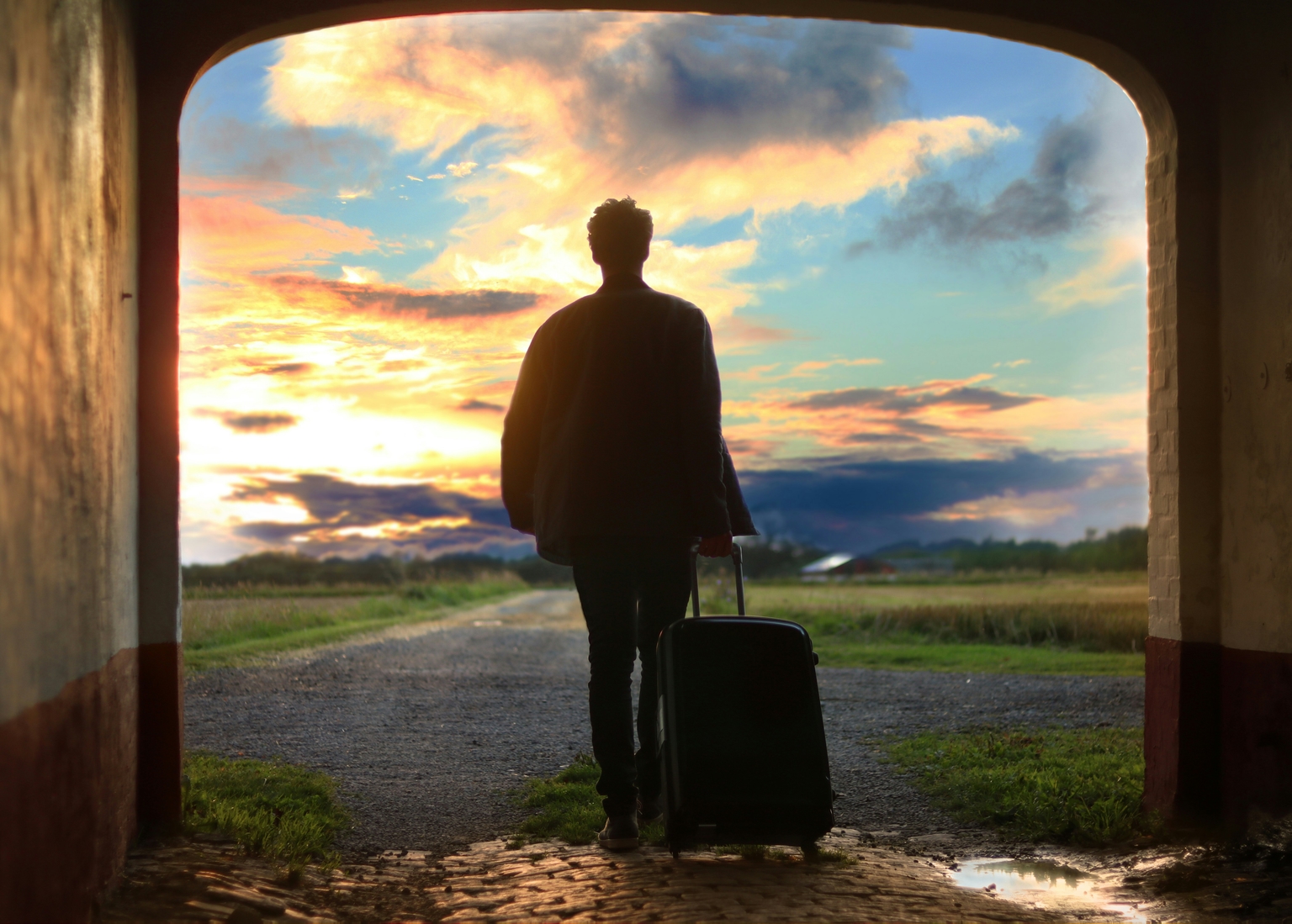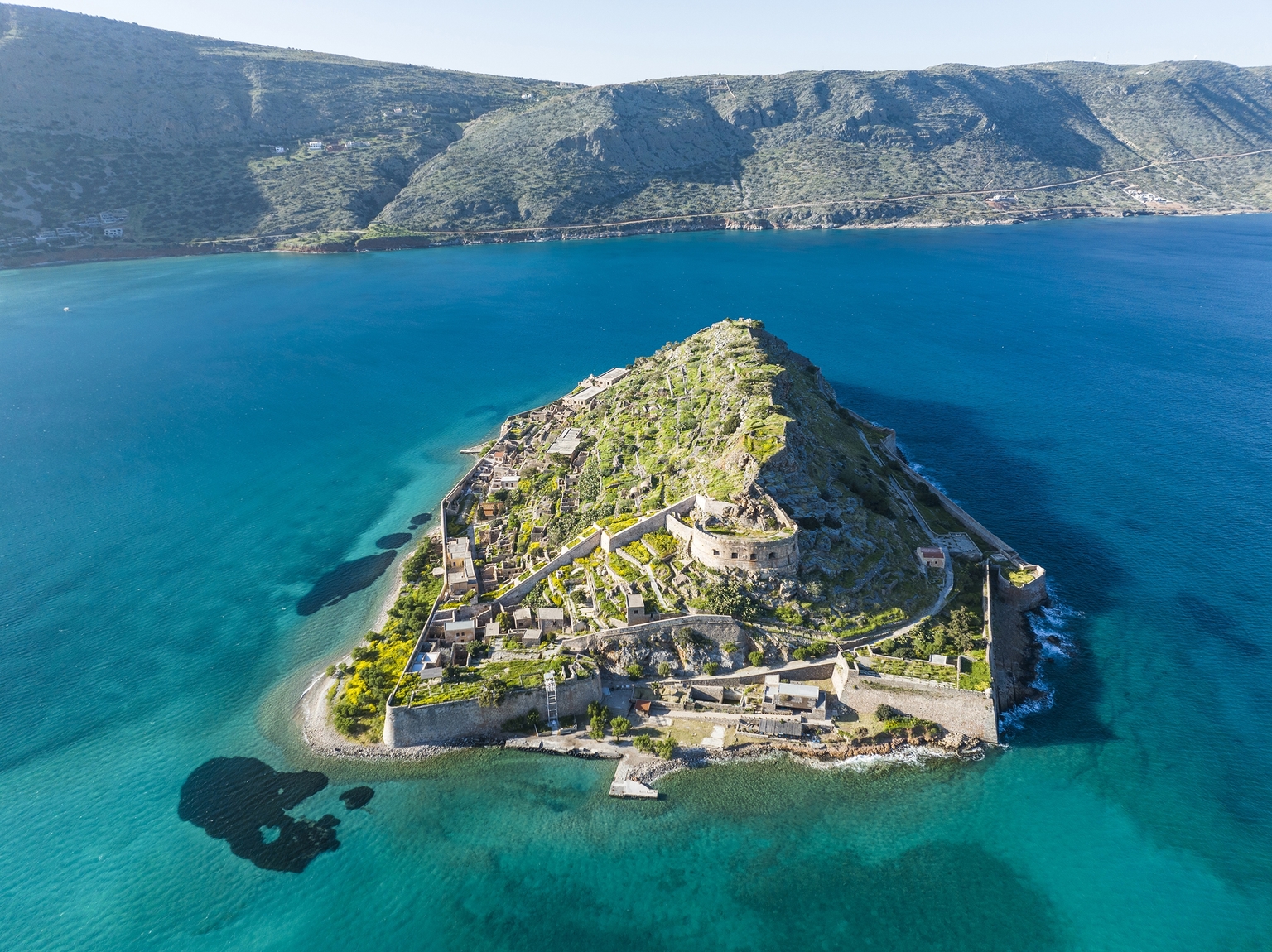Lasithi: Treasures of the plains
Author Discover Crete
Culture
Culture


In Kroustas, some 20 kilometers from the town of Agios Nikolaos, you get a sense of its residents’ proclivity for handicrafts even before you reach the village, thanks to an endearing welcome sign made by the locals and a stone bench at the village's edge inviting you to take a seat and enjoy the view of the surrounding farmland and sea.
Walking around Kroustas, I come across more handmade signs, each naming the different neighborhoods, and a modern abstract mural. I stop to have a look and fall into conversation with an elderly woman dressed in black as she shells almonds on a wicker chair outside her home. The almond orchards outside Kroustas dried up this year, she says, and the harvest was meager. Nevertheless, she offers me a handful of nuts with a twinkle in her sparkling blue eyes.
My walk then takes me to the village kafeneio, where I sit in the shade of the mulberry trees flanking the main road. There, Kyra-Papadio tells me all about “eftazymo,” a kind of bread for which Krousta is famous. It's not made with a sourdough starter; instead, it rises thanks to bacteria contained in chickpeas. And because getting it right is very tricky, the women of the village usually make it in secrecy, as failure is invariably the work of an evil eye.
This self-rising bread is traditionally baked in a wood-fired oven and is very fragrant. It is celebrated every August at the Eftazymo Festival in Kroustas, as well as at a similar celebration in the village of Kastamonitsa in Iraklio.
As Kyra-Papadio tells me more about village customs, we’re joined by other locals. One makes traditional costumes, and another makes wooden earrings. I hear from a third about a famous local shepherd and lyra-player named Yiannis, whose talent earned him the moniker “Lyraro-Yiannis.”
I drive to the neighboring village of Kritsa and, as I walk around its pretty streets, I meet a group of boys listening to mantinades on their cellphones. I strike up a conversation with them and they suggest I visit the churches of Afenti Christou and Panagia Keras, known for their fine Byzantine frescoes. As I leave them, one of the boys is teaching the steps of a traditional Cretan dance to the others. I am impressed by the fact that teenagers would take such a strong interest in the customs of their people.
On Kritsa's main street, I spot women sitting outside their homes embroidering, and I start chatting with two of them about a statue of a young woman that I've just passed. The statue, they explain, is called Kritsopoula, or the Maiden of Kritsa, and she is shown holding a piece of handiwork. “That’s how it is,” they say coyly. “All women must be good at looking after their homes! Or maybe not?”
The women of the Women’s Cooperative of Kritsa are certainly excellent at their tasks, I think, once I have followed the heady aroma of freshly baked cookies into the courtyard of their premises, where I am welcomed by Kyra-Marika and a table strewn with freshly roasted almonds and an array of sweet and savory pies and fritters. She tells me about the famed kritsopita, a pie made with phyllo that is rolled out straight into a hot fryer, and then explains the difference between Crete’s koubani and the more widely known syrup-soaked dough fritters called loukouma. She also talks to me about old customs that are still practiced today, and about the impressive traditional weddings still held in Kritsa.
The two ladies working away in the kitchen invite me in to try my hand at making lazanaki pasta and, for those few moments, I savor the beauty of working with one's hands in the company of other women. You can tell that this workshop has seen many hours of teamwork in preparation for feasts, weddings, baptisms and other important social occasions. Indeed, it can be said that the women of Kritsa have a reputation that reaches beyond the borders of Crete.

Reluctantly, I say goodbye to the smiling women of the cooperative, and head out in search of the road leading to Katharo Plateau. As I drive away heading uphill, the horizon seems to ripple like the surface of the sea. This sense of motion might be brought on by my knowledge that, some 250,000 years ago, this whole area was underwater.
Up on the plateau above, fossils of pygmy rhinoceros and elephants have been found. Kyr-Yiannis is an expert on the area and on its history, and he shows me a modest collection which he guards in a small suitcase. Working below a flag bearing the likeness of Che Guevara, he scorches designs into a pumpkin with a heated metal pen as he tells me about the naturalists who visit the plateau and about a video clip that was shot here by Yiannis Haroulis, a well-known musician and native of the area.
If I had a four-wheel drive vehicle, I could cross from Katharo Plateau to the Lasithi Plateau with little trouble, but in a conventional car, driving from one to the other means having to double back towards Kritsa and leaving the trip for the following day. As I head back down the hill, I spot a ratty office chair just standing there in a natural clearing that looks out to Agios Nikolaos and the sea. Undoubtedly, it belongs to a shepherd who uses it to keep an eye on his flock, but I make it my own for a few minutes. Breathing in the crisp mountain air and listening to the sweet sound of the sheep bells, I can’t help thinking that Crete is all about mountains, and looking out at the sea from up high.

I set off early the next morning from Agios Nikolaos to the Lasithi Plateau, driving along a snaking road that persistently winds through olive groves. I stop at Mesa Lasithi which, I’m told, has a very beautiful wood-carved icon screen in the main church. An elderly lady cordially offers to help me find the priest who has the keys to the church, but he is not around so we agree that I should try again later.
To find my way to the neighboring village of Agios Georgios, I follow a fisherman peddling his catch on his weekly rounds of the area. I’m impressed by the fact that he got as far as this, 75 kilometers from his home base in Ierapetra. When I tell him where I’m headed, he pauses: “Won’t you be coming around our parts?” he asks, obviously upset. I tell him I understand that it's an oversight, to be sure, but I try to explain that it's impossible to get all of Crete into the pages of just one book.
At Agios Georgios’ kafeneio, I get talking with Kyra-Eleftheria about the village’s windmills; it’s a subject that makes her eyes sparkle with enthusiasm. “There used to be 19,000 windmills on the plateau. Their sails would flutter like butterfly wings!” she says, astonishing me with the unexpectedly high number. She puts down her tray for a few minutes so we can pop over to a windmill close by that’s still in use, pumping water to irrigate a nearby vegetable patch.
“It used to be the job of the children to climb up the windmill and hang the sails. They’d also supervise the watering of the fields while their parents tended to other tasks. Children today, though, have turned into robots, sitting on a couch all day with a cellphone in their hands,” she says with a smile and a slight note of nostalgia in her voice.


As lunchtime approaches and I prepare to continue my journey to Diktaion Andron Cave, Kyra-Eleftheria insists on making me a couple of eggs and a toasted sandwich for the road. The Cretans are, of course, renowned for their hospitality, but the thoughtfulness of this energetic woman makes me feel like family. I would love to see the fisherman from Ierapetra again so I could tell him that Crete’s greatest beauties have nothing to do with the places you visit, but with the people you meet.
I am brought to a halt at a village on the road to the cave by the sight of an elderly black-clad man cleaning fresh artichokes outside the door of his home. There is a sign written in a child’s hand on the sparkling white wall behind him: “I love you, Grandpa and Grandma.” I pull over, drawn by the desire to say hello to this gentleman, even though I have no idea who he is.
We start chatting and he gives me a slice of succulent artichoke to taste. “You’ve got to have tsikoudia with artichoke,” he says, and insists on treating me to a glass. What I know at this point is that, if I were to let myself surrender to the incredible hospitality of these people, I would never reach my destination.
Diktaion Andron Cave and the stone path that leads to it are imposing and mysterious enough to make it seem plausible that people once believed the cavern to be the birthplace of Zeus. Despite the throngs of visitors heading down the humid steps into the mystical cave, I have no problem summoning the same awe felt by pilgrims thousands of years ago as they made the journey down into the bowels of the Earth to honor the father of the gods among the stalactites.
Even greater than the wonder I felt underground is my sense of revival when I return to the strong warm sunlight. Warmer still than that, however, is the element that has impressed me most on my tour of Lasithi’s plateaus: the sunny disposition and kindness of the people.
Source: “Handcrafted Crete”, Isabella Zambetaki, Region of Crete

Kritsa: Discover the Charm of Its Picturesque Alleys

Bust of Kritsotopoula

Kritsa Women’s Cooperative: A Delicious and Traditional Stop!

Katharo Plateau
